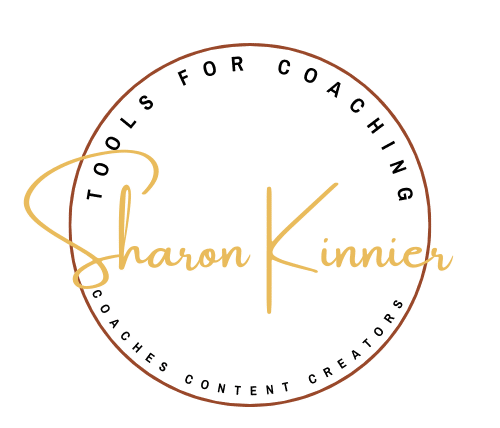Demystifying PLR Licensing: What It Means and How It Works
If you're a content creator or marketer, chances are you've come across the term “PLR licensing” at some point in your career. But what exactly does it mean? And how does it work? It's a topic that can often leave people scratching their heads, unsure of what they're actually getting into.
I'm Sharon, and let me tell you, I'm absolutely obsessed with PLR. It's been my passion for years, and I've dedicated myself to talking about it, writing about it, repurposing it, and even creating my own PLR. I've amassed a wealth of knowledge on the subject, and I'm thrilled to share it with you right here.
Get ready to dive deep into the world of PLR with me! So PLR licensing and demystify all the confusion surrounding it. So sit tight and get ready to learn everything you need to know about PLR licensing!
Understanding PLR Licensing: The Basics
Contents
- 1 Understanding PLR Licensing: The Basics
- 2 How PLR Licensing Works and What You Need to Know
- 3 Why Digital Content Creators Choose PLR Licensing
- 4 Different Types of PLR Licenses Explained
- 5 Pros and Cons of Using PLR Content in Your Business
- 6 Tips for Making the Most of Your PLR License
- 7 You May Be Wondering….
PLR Licensing is a term that you may have come across if you are a digital content creator or marketer. PLR stands for Private Label Rights, which means that the content creator has the right to sell or modify the content as their own. In other words, when you purchase a PLR license, you are essentially buying the rights to use someone else's content as your own.
PLR licensing can be a great way to save time and money on content creation, as it allows you to use pre-made content for your website, blog, or social media channels. However, it's important to understand the terms of the license before purchasing any PLR content.
Some common terms that may be included in a PLR license include restrictions on how the content can be used, whether or not it can be resold, and whether or not it can be modified. It's important to read through these terms carefully before making any purchases to ensure that you are getting the most out of your investment.
Overall, PLR licensing can be a valuable tool for digital content creators and marketers looking to save time and money on content creation. However, it's important to understand the basics of how PLR licensing works and what types of licenses are available before making any purchases.

How PLR Licensing Works and What You Need to Know
PLR Licensing is a unique concept where creators sell their content with various rights. There are different types of PLR licenses available, each offering different rights to the buyer. Essentially, when you purchase a product with PLR licensing, you gain the right to use it as if it were your own – subject to certain conditions specified by the creator.
Some of those conditions include restrictions on how or where the content can be used and whether or not editing or modifying it is allowed. Other factors that may impact what type of PLR license you need include your intended usage and audience reach.
It's important to carefully read and understand all terms and conditions associated with any PLR license agreement before making a purchase decision so that there are no surprises down the line. Some sellers might even offer additional support in order for buyers to make sure they're getting maximum value out of these products.
Regardless of why someone would choose this kind of licensing versus traditional copyright protections, one thing remains clear: consumers both benefit from having access while digital content providers benefit from expanding their reach through resale opportunities!

Why Digital Content Creators Choose PLR Licensing
Digital content creators often choose PLR licensing for a variety of reasons. One of the main benefits is that it saves time and effort. Instead of creating content from scratch, they can purchase pre-made content and customize it to fit their needs. This can be especially helpful for those who are not experts in a particular field but still want to offer valuable information to their audience.
Another advantage of using PLR content is that it can be a cost-effective solution. Hiring a professional writer or creating content in-house can be expensive, while purchasing PLR content is often much more affordable.
However, it's important to note that not all PLR content is created equal. Some may be outdated or low-quality, which can reflect poorly on your brand. It's important to do your research and choose reputable sources for your PLR content. In some cases the terms of use may be vague. It is very important that you have a clear understanding of the plr licence for your plr products.
Overall, using PLR licensing can be a valuable tool for digital content creators looking to save time and money while still providing high-quality content to their audience.

Different Types of PLR Licenses Explained
Basic PLR License: What You Can and Cannot Do
A Basic PLR License grants you the right to use and modify the content as you see fit. However, it does not give you exclusive ownership of the content, meaning that others can also purchase and use the same content. Additionally, most Basic PLR Licenses prohibit reselling or distributing the content as PLR to others.
It's usually sold as personal use only. t's important to carefully read and understand the terms of use for your PLR License before using the content in your business. Keep in mind that while PLR content can save you time and money, it's important to add your own unique voice and perspective to make it truly valuable for your audience.
Master Resell Rights (MRR) License: Understanding the Benefits and Limitations
With a Master Resell Rights (MRR) license, you have the right to resell the product and pass on the resell rights to your customers. This means that your customers can also resell the product and keep 100% of the profits. MRR licenses are often more expensive than other PLR licenses because they offer more flexibility and potential for profit.
However, it's important to note that MRR licenses often come with limitations. For example, you may not be able to modify the product or claim authorship. Additionally, some MRR licenses may restrict where you can sell the product or how much you can charge for it. Before purchasing an MRR license, make sure to carefully read and understand the terms and limitations to ensure it aligns with your business goals.
Private Label Rights (PLR) License: How to Customize and Rebrand Content
A Private Label Rights (PLR) license allows you to customize and rebrand content as your own. This type of license grants more flexibility compared to other types of licenses, allowing you to edit the content and claim it as yours. PLR licensing typically includes articles, e-books, videos, software programs, or courses that can be used for marketing purposes.
Customize and rebranding are two important key phrases relevant to the keyword PLR Licensing because they emphasize the ability of users to make changes and alterations in order to match their specific needs or preferences.

A giveaway rights license is a type of PLR license that allows you to give away the content for free. This means that you can use the content as a lead magnet to attract new subscribers or as a bonus for your existing customers. However, it's important to note that this type of license usually comes with restrictions. For example, you may not be allowed to modify the content or sell it in any way.
It's also important to make sure that you are following the terms of the license and not infringing on any copyrights. Overall, giveaway rights can be a great way to leverage PLR content for your business and attract new leads. You will find lots of free eBooks with original content as well as PLR eBooks that will qualify for giveaways.
Pros and Cons of Using PLR Content in Your Business
Using PLR content in your business can be a great way to save time and effort, but there are also some potential downsides. One major disadvantage is the lack of originality – because other people have access to the same material, it may not stand out as unique. Additionally, some PLR licensing agreements restrict how you can use the content, which could limit your options for customization or distribution.
On the other hand, using PLR correctly can help improve your productivity and efficiency by providing ready-made materials that you can quickly adapt to fit your needs. Make sure you carefully review any licensing terms before making a purchase so that you fully understand what's allowed and what isn't.
With careful planning and attention to detail, using PLR content can be a valuable asset for many types of businesses. This will allow you to have digital products to sell directly to you your email list. Most importantly do not forget to put your own touch on your PLR articles.
A lot of people who work with PLR, usually are selling via their plr website. Website visitors are looking for high quality PLR. For instance in coloring pages they would search for original design works, same with video courses and online courses. A few plr seller(s) will have their own content and offer resale rights with their products.
For instance digital planners are usually original work and they come with source files and a pdf file from the designer. When working with a content writer be sure to be sure that it is clear about the intellectual property. Also In most cases you will get the latest release of their product. Always check for usage right information. Its usually part of the license or the terms of conditions. You want to check that the PLR package that you just purchases, has all the PLR rights for everything included in the package.
Tips for Making the Most of Your PLR License
When it comes to making the most of your PLR license, there are a few things to keep in mind. First and foremost, quality is key. Look for reputable sources that offer high-quality PLR content that is relevant to your niche. Additionally, customization is crucial. Take the time to make the content your own by adding your own voice and perspective, as well as making any necessary edits or updates.
Another tip is to use PLR content strategically. Don't just throw it up on your website or social media without a plan. Instead, think about how you can use it to enhance your existing content or create new products and offerings. You can also repurpose PLR content in various ways, such as turning an article into a video or breaking it down into social media posts.
Finally, don't forget about SEO. Make sure to optimize any PLR content you use with relevant keywords and meta descriptions to help improve your search engine rankings. By following these tips, you can make the most of your PLR license and use it to grow your business in meaningful ways.
As business owners, you are aware of your PLR star sellers that you will advertise in your mailing list. For those products you want to be sure that it represents you well. These products may show up in your blog posts, newsletters and testimonials. This makes it very important that you are following terms of conditions before adding your own name.
PLR licensing can be a valuable tool for digital content creators looking to save time and money while still producing high-quality content. By understanding the basics of PLR licensing and how it works, you can make informed decisions about which type of license is right for your business.
While there are pros and cons to using PLR content, with the right approach and strategy, it can be a powerful asset in your content marketing arsenal. By following the tips outlined in this article, you can make the most of your PLR license and take your business to the next level.







